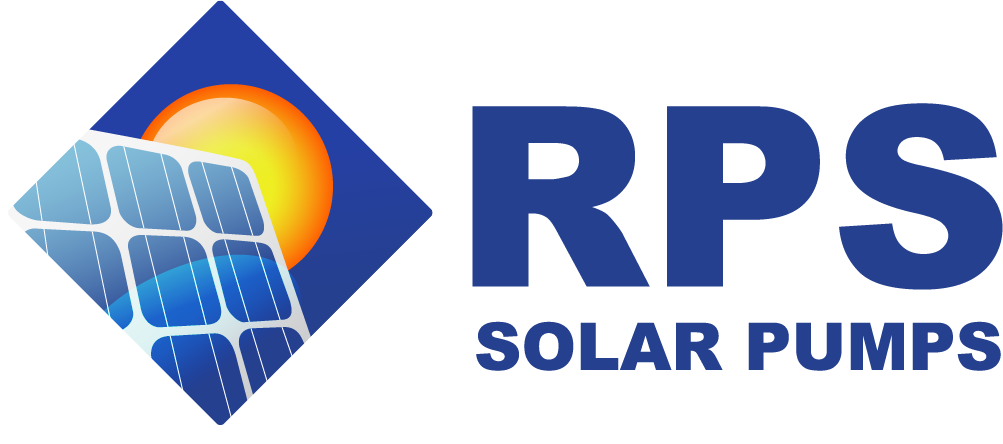Solar Panels FAQ
Where should I locate my Solar Panels?
Ideally within 50 feet of the well so there isn’t a huge voltage drop over the distance. The ideal sites are in full sun all day without shadows. You’ll want the panels to face South. The optimal ‘Tilt’ angle of the panels is based on your latitude. Our detailed user manual provides more details to optimize your system. We also have some additional mounting information, photos & diagrams here. (Over 500ft is fine, just need thicker gauge wire or more solar panels)
What are the panel’s specs & dimensions?
Our great RPS Brand 100 watt panels are about 26″ x 37″ x 1 1/4″ and usually come in sets of 2 protected with foam on all sides. They weigh about 17 pounds each and have 4 mounting on the back side on the long sides but the frames can be mounted in a number of different ways without these holes as well.
What is the best way to mount the solar panels?
There are a few different styles of mounting and the best options vary customer to customer based on the installation site. If you have a south facing roof or wall on a nearby building, the wall mounts and roof mounts are popular. Many customers use aluminum mounts on a pole or a windmill or a frame of steel pipe or 2x4s. More detail and mounting photos here.
Why 100 watt panels instead of 200+ watt panels?
We supply the highest quality mono crystalline solar panels currently available on the market. These use some of the highest efficiency solar cells available, meaning they turn the most amount of sunlight into electricity. The panels are rated for a minimum of 25 years with minimal power reduction. 100 watt solar panels are an optimal size for mounting with 1 person and easy to ship without damage. Larger 200+ watt solar panels are easily damaged in shipping and are usually too heavy/awkward to lift and install by one person. Our goal in everything we do is to make it easier to install solar pumps. At the end of the day, they have the same performance at their larger counterparts and have the benefit of cheaper replacement cost in case one gets damaged.
What maintenance is required?
Just keep the panels accessible to the sun – free of leaves, pine cones and snow! Use something soft (like a fabric mop or car squeegee) to clean them off. Not your metal rake 😉 You can see a video on our YouTube channel on this!
Are the connecting wires included?
Yes. Everything you need is in the kit. There are snap-in connectors for the panels. The panels in your system may be designed to be wired in parallel or in series. Both are easy to install and all the wiring is included.
Can I add more panels later?
Yes. Everything is designed to be very modular with RPS systems. You can easily add more solar panels for the winter or for increased production in the morning or evening hours. Our systems are designed to get you at least 6 hours of pumping a day – northern latitudes a little less and southern a little more – so there is more solar in each array than the rated power of the pump. More is generally better as long as they are all wired in the proper series/parallel and we have diagrams to make this really easy.
What do I do to Ground the solar panels?
Grounding is covered in detail in the user manual but generally we recommend a grounding rod and bare copper wire from the panels and controller (often connected – a single rod is recommended) to get both these components to Earth Ground.
What about wind and hail?
Common questions especially in Texas and Oklahoma. The truth is it’s really very rare that there is hail damage to the thick impact resistant glass of the solar panels. Some customers tilt their panels a little steeper if they are in hail prone areas to make it a little more of a glancing blow with the hail. This goes for wind too and a good solid mount should be constructed. Our RPS Brand mounts are rated to 91mph winds and 1″ of ice. With that said we only get a few panels a year damaged by any weather out of thousands of customers.
Can I use my existing solar panels?
The answer is ‘maybe’ as long as we can get the right voltage and overall power. Be sure to talk to an RPS engineer first to make sure. We have some great documentation to ensure the system will work properly the first time.
